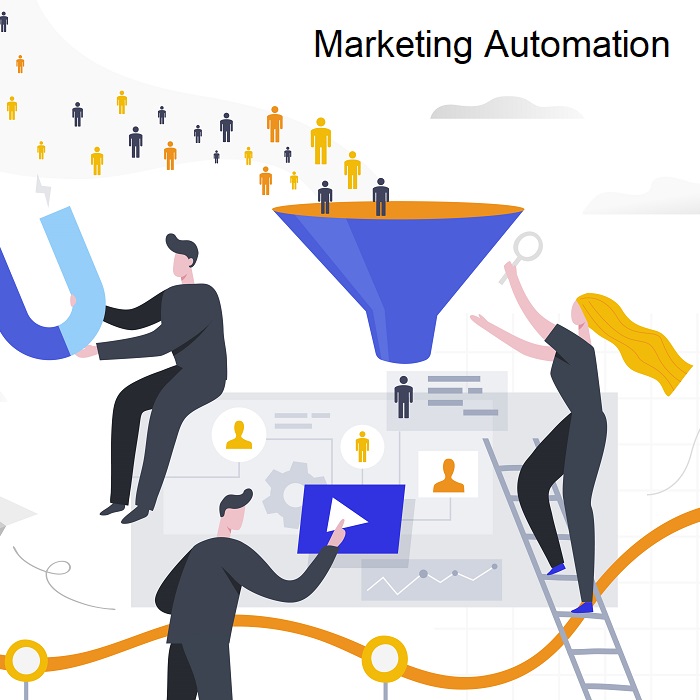A marketing automation content strategy is a combination of tactics that nurture, produce leads, and transform sales.
Since Henry Ford’s infamous comment, ‘You can have any colour as long as it’s black,’ marketing has changed, transformed and become unrecognisable from its origin. Its metamorphosis has been dramatic in the last decade, with the digital age dawning. Technology has rapidly evolved and changed how companies connect with their customers and influence the buying process.
As the internet has evolved, companies have sought to establish their web presence, and more than a decade on, many are discovering your website is more than a digital storefront. It provides a platform to engage, interact, and influence a large part of the buying process.
As the effectiveness of cold calling has diminished, companies are desperate to find new ways with which to prospect for new business. By the time a salesperson calls on a prospect, they have already done their research, visited your competitor’s websites, and evaluated the products on offer. This entails that the conversation that would have occurred a decade ago now needs to be dramatically different today.
So now, imagine that your competitors have been proactive with their digital strategy; they have sophisticated electronic emails where they can track customer behaviour and gain valuable insights into the state of buyer readiness. Imagine that their marketing systems can identify that prospect X has engaged with their company online X times, has looked at these products, visited these web pages, and downloaded a particular case study. An alert is then sent to a salesperson within the relevant territory giving insight into the prospect’s behaviour. Meanwhile, in the background fully automated process identifies these behaviours, flags the prospect, and passes the lead to sales.
Now compare this process with a company that does not have a digital strategy or, worse, marketing personnel. The salespeople will be left in the most uncompetitive position imaginable.
This is occurring now in North America there has been a massive uptake of marketing automation, and any company that has failed to adopt are losing their edge in the market. Marketing automation is relatively new in Australia, although companies are starting to adopt and those that do not begin to prepare will struggle to compete.
Marketing automation is not complicated, it is better understood if viewed as a behavioural tool. Just like when we observe an activity, we gain an inference of its probable course; marketing automation does the same when prospecting for new customers, allowing your sales teams to focus on the more productive leads.
To create a Marketing Automation Content Strategy, you require results, so let us look at how this might look in practice.
Good, clean data
The digital strategy relies upon good clean data; without this, it will not work. What this means is that you must have a database that will allow your marketers to send highly targeted communications. This implies that customers should be segmented across decision-making profiles, industries, or any other parameters that allow you to group prospects into logical categories.
Your website is your temple
One of the primary goals of your digital strategy should be to drive traffic to your website. So now, you must consider how you need to be portrayed when prospects visit. This is a moment of truth. Customers will want to do business with you if they perceive that your company is congruent with their business needs. So if you present a clean, well-informed, and professional site, and these are the types of customers you wish to attract, they will continue to explore your site. If not, they will leave and move to the competition.
Content is king
Now that prospects are on your website, they require information to satisfy their inquiries. This is achieved via well-written and informative articles and blogs, as well as well-organised and logical content. The key is to be customer-centric, not to focus overly on your accolades.
Campaigns that inform
The next step is to run highly efficient customer-centric campaigns. This means email marketing that includes a blend of products and other information that seeks to solve the customer’s problems. These emails’ primary purpose is to encourage traffic to your site, although it does not stop there.
We need to put a face to these anonymous visitors so that we can start to assist them through their buying cycle. One of the easiest ways to do this is to offer premium content in the form of case studies, whitepapers, or eBooks. To access this content, the prospect is invited to share a little about themselves so that we can put a name to the face.
Depending on your industry and what you sell, the next step will vary. It may be that sales are alerted to the prospect so that they can reach out, or marketing may send an invitation to purchase that further qualifies the prospect.
The biggest question that requires consideration is, what happens when your competitors have adopted a digital strategy and you have not? Is not a question of ‘if’ but ‘when’. It is the job of CEOs and senior executives to plan for the future and seek strategies that will deliver increased revenue and profit.
For a confidential discussion on how we can assist you with the implementation of a marketing automation content strategy, please contact our office.
If you found this article helpful, follow us on LinkedIn or subscribe to Our Insights on this page’s right-hand column to ensure you don’t miss new posts.
Articles you may also be interested in reading:
© Y2015 Sales Focus Advisory All Rights Reserved
